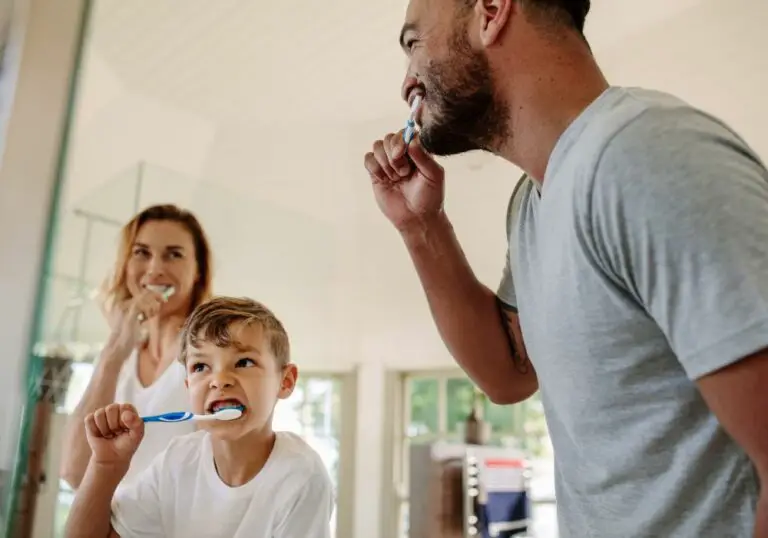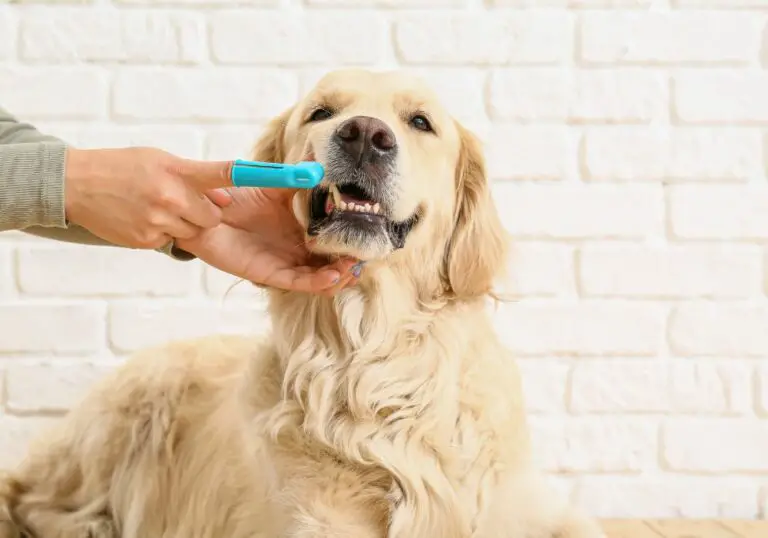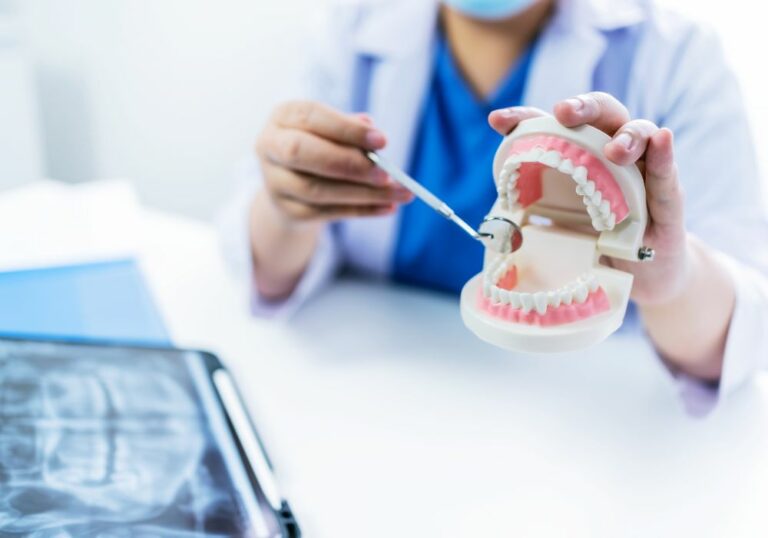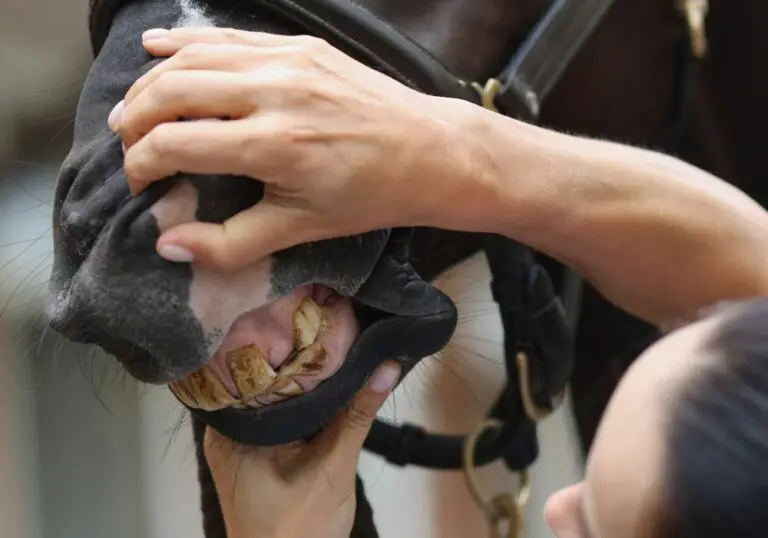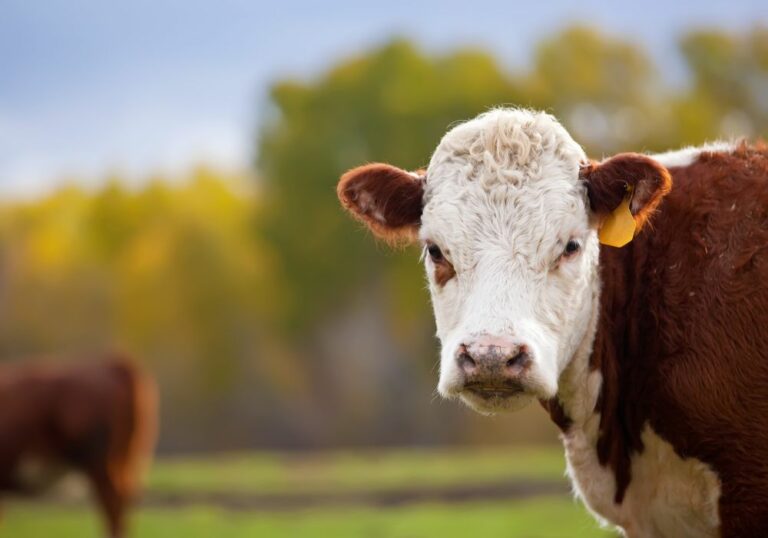As dogs reach their senior years, it is common for their teeth to deteriorate or fall out due to periodontal disease, tooth decay, or traumatic injury. Many pet owners wonder if dogs can live a good life without any teeth. The short answer is yes, dogs can adapt well to living without teeth if proper care is provided. However, tooth loss can significantly impact a senior dog’s health and wellbeing. There are important considerations for caring for and ensuring the best quality of life for a toothless old dog.
Understanding dental issues in aging dogs
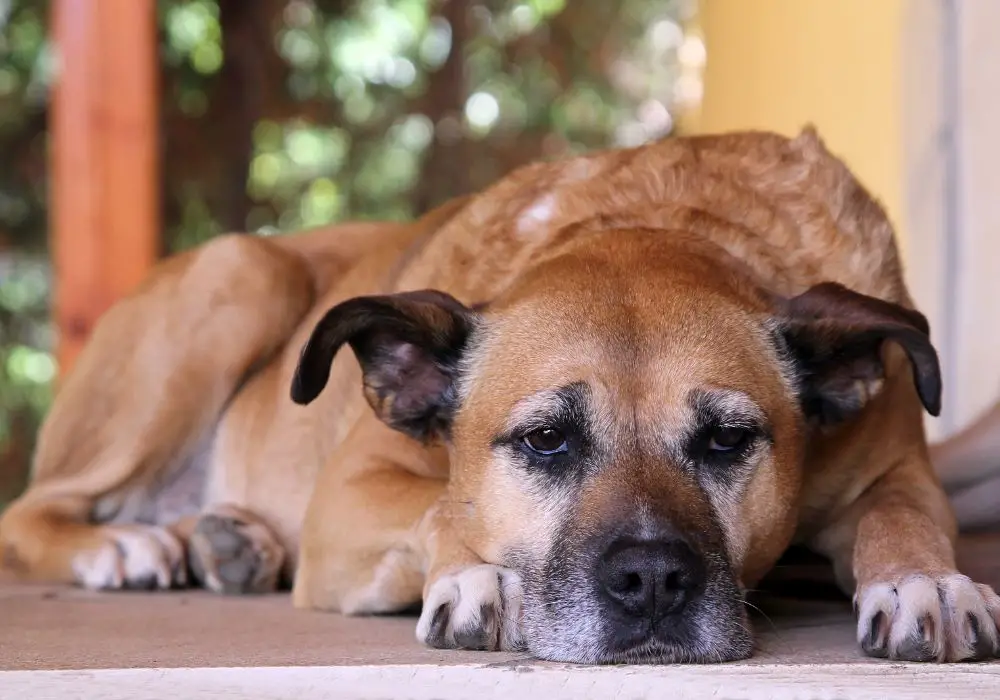
Senior dogs are prone to developing dental diseases and conditions as they age. According to the American Veterinary Medical Association (AVMA), by the time dogs are just 3 years old, about 80% have signs of oral disease. By age 5, most dogs have significant dental disease requiring intervention. There are several common dental problems seen in geriatric dogs:
Periodontal Disease
Periodontal disease is inflammation and infection of the tissues surrounding and supporting the teeth. This includes the gums, periodontal ligaments, and tooth sockets (alveolar bone).
Periodontal disease is the most widespread oral health problem in dogs. It’s caused by the accumulation of dental plaque on the tooth surfaces, which leads to gingivitis and then more severe periodontitis. Plaque is a sticky film composed of food debris, saliva, and bacteria. If not removed promptly by brushing, plaque mineralizes into tartar that adheres strongly to the teeth.
The bacteria in plaque and tartar cause chronic inflammation and infection of the gums and tooth roots. This leads to red, swollen gums, bad breath, and pain. Eventually, it progresses to irreversible periodontitis with receding gums, bone loss around tooth roots, and loosening or loss of teeth.
Periodontal disease usually develops slowly over years. Without professional dental cleanings, most dogs over age 5 have significant periodontal disease. It can affect all teeth types, but especially the large teeth used for chewing.
Tooth Decay
Tooth decay is damage to the tooth enamel and underlying layer called the dentin. It is caused by acids produced by plaque bacteria that erode and demineralize the tooth surface. This erosion results in cavities or dental caries.
Severe tooth decay allows bacteria to invade the tooth pulp (nerves and blood vessels inside the tooth). This causes a painful tooth root abscess. Abscessed teeth must be treated or extracted by a vet.
Tooth decay is more common in small breed dogs due to overcrowding and malocclusion of teeth. It typically affects the back teeth (premolars and molars) first since they have more grooves for bacteria to collect in.
Tooth Fractures
Tooth fractures are cracks or broken fragments of the tooth crown or root. Fractures can involve the enamel, dentin, pulp, or supportive structures like the periodontal ligament.
Traumatic injury is the most common cause of tooth fractures in dogs. Being hit by cars, falls, bites from other animals, or chewing on hard objects can fracture teeth. Fractures are also linked to periodontal disease since the weakened tooth structure is more prone to breakage.
Depending on the severity and location, tooth fractures may lead to abscesses, bone loss, or tooth loss if left untreated. Root fractures below the gumline can be especially problematic.
Malocclusion
Malocclusion means misalignment of the upper and lower teeth. It prevents normal motions required for biting and chewing.
Congenital malocclusion from abnormal jaw development is most often seen in brachycephalic (short-nosed) breeds like bulldogs, Shi Tzus, and pugs. Acquired malocclusion can also result from periodontal disease, fractures, or trauma.
Misaligned teeth are difficult to keep clean and prone to severe plaque buildup. This dramatically raises the risk of periodontal disease and tooth loss if not corrected.
Oral Tumors
Both malignant and benign tumors can develop in the mouth of older dogs. The most common oral tumor is melanoma – accounting for 30-40% of all canine mouth tumors. Melanoma arises from the pigment-producing cells in the mouth and often affects the gums and lips.
Another common oral tumor in senior dogs is squamous cell carcinoma. This cancer begins in the squamous epithelium lining the mouth and tongue. It often appears as an ulcerated mass.
Some warning signs of oral tumors include unusual swellings in the gums, loose teeth, bleeding from the mouth, and difficulty eating. Biopsy is needed for a definitive diagnosis. Depending on the type and location of the tumor, cancer treatment may require surgical removal of multiple teeth.
Missing Teeth
Many senior dogs become completely edentulous (without teeth) or have few remaining teeth due to advanced periodontal disease, severe tooth decay, or traumatic injury requiring extraction.
Periodontal disease is the leading cause of tooth loss in dogs. Chronic periodontitis damages the periodontal ligament and alveolar bone holding the teeth in their sockets. This causes progressive loosening and eventual tooth loss if not treated.
Other Oral Conditions
Some additional oral problems senior dogs may experience include:
- Oral inflammation and ulcers
- Abnormal tooth wear from grinding or cage chewing
- Inflammation of salivary glands (sialadenitis)
- Cleft lip or palate
- Immune-mediated disease like uveodermatologic syndrome
- Oral cancers like squamous cell carcinoma
As you can see, senior dogs are prone to developing a number of painful and potentially serious dental diseases and conditions. Many of these problems progressively worsen over time, making tooth loss inevitable. Understanding the common oral health issues in older dogs helps owners be aware of subtle signs and provide preventative care. Catching dental disease early greatly improves the prognosis and allows for less invasive treatment.
Why might senior dogs lose all their teeth?
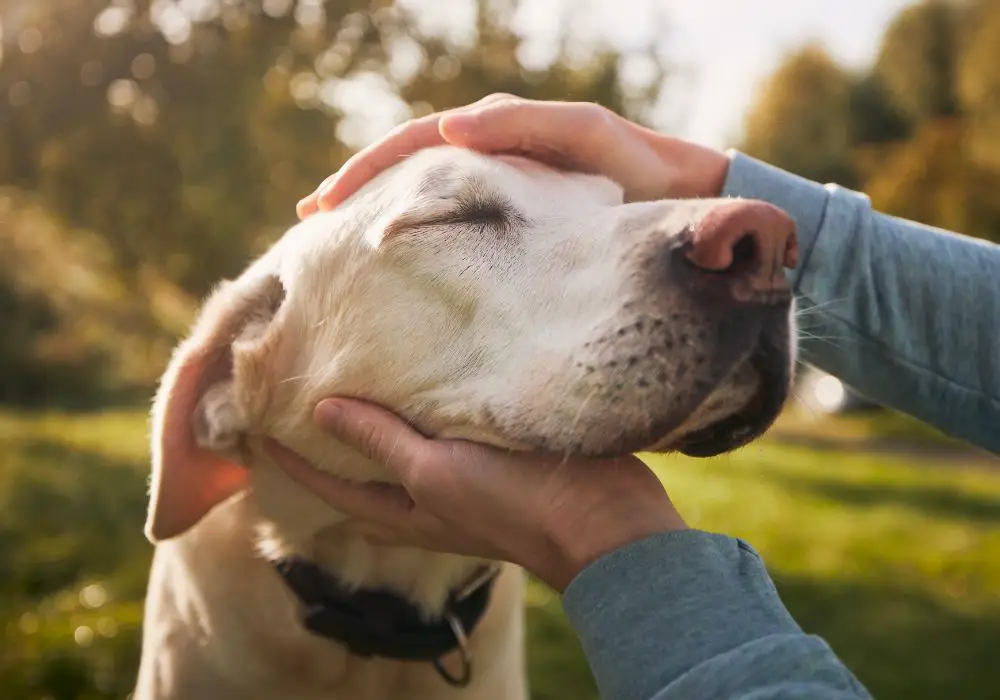
There are several reasons that an older dog may lose most or all of their teeth:
Advanced Untreated Periodontal Disease
allowing plaque and tartar to build up. Over many years, severe periodontal disease leads to extreme gum recession, severe bone loss around tooth roots, and loosening or loss of many teeth. Full mouth tooth extraction is often recommended in these advanced cases to prevent systemic illness.
Oral Cancer
Oral melanoma, squamous cell carcinoma, and other cancerous growths often invade bone and require removal of parts of the jaw along with multiple teeth to get clean surgical margins. Biopsies of tumors determine how much tissue must be extracted.
Severe Dental Injuries
Being hit by cars, attacked by other animals, falling from heights, or chewing on hard objects can lead to severe trauma. If teeth are fractured down to the roots, pulpal exposure occurs, or supporting bone is damaged beyond repair, full extraction may be required.
Congenital Physical Defects
Some dogs are born with cleft palates, extremely short jaws, or missing teeth. These defects make their remaining teeth more prone to periodontal disease. As they age, progressive extractions may eventually be needed.
Canine Cognitive Dysfunction
Behavioral changes in senior dogs with canine cognitive dysfunction (doggie dementia) can cause them to stop cleaning their teeth properly. They may also chew or rub their mouths excessively out of anxiety or confusion, worsening oral health.
Kidney Disease
As kidney failure advances, the buildup of toxins in the blood creates inflammation and an unhealthy oral environment. This leads to secondary infections, calculus buildup, and worsened periodontal disease often necessitating tooth removal.
Medications
Some drugs like phenobarbital and calcium channel blockers may increase the likelihood of periodontal disease and necessitate more tooth extractions. Chemotherapy can also impact oral health.
Owner Neglect
Lack of preventative homecare like brushing, professional cleanings, and routine veterinary dental checks makes severe dental disease more likely. Financial limitations and lack of access to veterinary care also contribute.
Old Age
The accumulative effects of a lifetime of wear, tear, and disease. Even with good care, many dogs eventually lose most or all teeth due to the declining body processes of old age.
Effects of tooth loss on senior dogs
When a senior dog loses some or all of their teeth, it impacts their quality of life and physical health in various ways:
Impacts on Eating and Nutrition
Tooth loss poses significant challenges for eating and nutrition in dogs. Some problems include:
- Difficulty picking up and chewing kibble or dry foods without incisors and molars
- Discomfort or reluctance when eating treats, bones, or other hard foods – may avoid chewing
- Messy eating with wet food and liquids falling out of the mouth
- Weight loss from reduced food intake due to discomfort. Difficulty accessing nutrition.
- Malnutrition if calorie intake is drastically reduced long-term
- Loss of interest in food or mealtime because of discomfort
- Gastrointestinal issues like vomiting, diarrhea, or constipation from poor digestion
- Dehydration from lack of water intake or excessive drooling
- Choking hazard from trying to swallow large pieces of food
- Aspiration pneumonia if food accidentally inhaled into lungs
Impacts on Oral Health
Losing teeth also affects remaining oral tissues:
- Tongue, cheek, and gum injuries from sharp tooth edges before extractions
- Oral pain from exposed tooth nerves and damaged tissue
- Increased plaque, tartar, and gum inflammation around any remaining teeth
- Rapid periodontal disease progression in any leftover teeth
- Bacterial or fungal infection of tooth sockets after extraction
- Dry mouth and phlegm from reduced saliva production
- Irritation and inflammation of salivary glands
- Jaw bone deterioration from missing tooth roots
Impacts on Physical Health
Tooth loss can also have negative systemic effects:
- Weight loss and muscle wasting from reduced nutrition
- Weakened immune system if nutrient intake is deficient
- Increased risk for canine cognitive dysfunction from inflammation
- Straining or irritation of salivary glands
- Bacteria entering bloodstream through exposed tooth sockets
- Higher risk of heart, kidney, and liver disease
- Poor wound healing from nutritional deficiencies
- Greater susceptibility to illness and infection
Impacts on Behavior and Mood
The behavioral effects of tooth loss include:
- Increased anxiety or restlessness, especially around meals
- Food aggression or resource guarding due to discomfort
- Avoiding play, interaction, or affection due to mouth pain
- Irritability, growling, or snapping when touched on face
- Hesitance to groom self or be groomed due to mouth sensitivity
- Increase in repetitive behaviors like pacing or licking
- Disinterest in toys, training, games, or walks
- Change in barking patterns
- Separation anxiety from disrupted routines
- Depressed or lethargic demeanor from chronic pain
- Increased vocalization from anxiety or seeking attention
- Cranky or aloof behavior especially when food is near
As you can see, tooth loss affects senior dogs in complex ways beyond just eating. It helps to look at the whole dog when assessing quality of life for a toothless pet. Monitor both physical symptoms and behavioral changes closely.
Caring for senior dogs without teeth
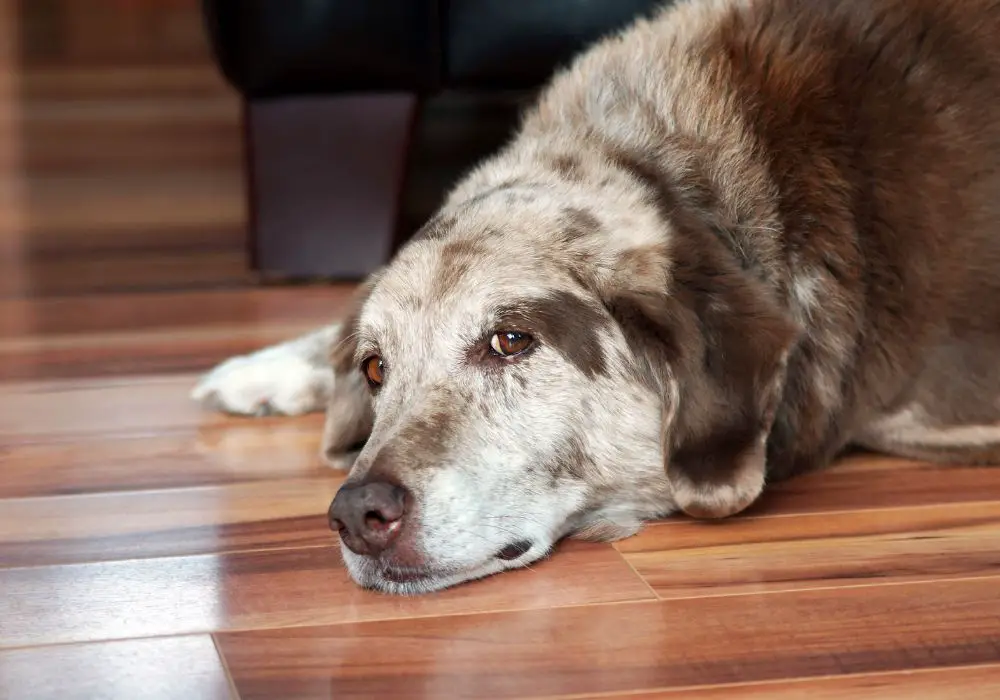
Caring for a toothless senior dog requires patience, attention to diet, creating a safe environment, regular veterinary care, and being sensitive to changes in their behavior and mobility. With some adjustments, dogs can live very well without teeth. Here are some tips:
Veterinary Care
Close partnership with your vet ensures the best care for a toothless dog:
- Post-operation exams to check incisions, monitor pain, and watch for signs of infection
- Pain medication to keep the dog comfortable during recovery
- Antibiotics if needed to treat or prevent tooth socket infections
- Anti-inflammatories to control swelling and pain
- Nutritional supplements to support immune health
- Bloodwork to monitor organ function, electrolytes, and protein levels
- Hydration with subcutaneous fluids if not drinking enough
- Medication for dry mouth or salivary gland problems
- Cancer checks like lymph node palpation and chest x-rays if needed
- Ongoing dental assessments of any remaining teeth
- Hospice care and euthanasia planning when needed to prevent suffering
Diet Adjustments
The consistency of food is one of the biggest considerations for toothless dogs. Here are some helpful diet tips:
- Switching to wet, canned food instead of dry kibble. Canned food is easier to pick up and swallow without teeth.
- Adding warm water, low-sodium broth, or gravy to soften dry kibble. Allow time for it to get mushy.
- If still feeding dry food, choose a small kibble size they can swallow whole. Avoid large chunks.
- Hand feeding works well for the initial weeks after extractions so you can monitor intake.
- Avoiding chews, pig ears, bones, antlers, and other hard treats that could injure gums.
- Adding vegetable oil, egg yolks, puppy formula, or nutritional gels to increase calories.
- Elevating food and water bowls to make access easier.
- Providing plenty of fresh water to prevent choking and support healing.
- Letting them lick food off your fingers or a spoon if struggling.
Home Environment Adjustments
You may need to “puppy-proof” areas of the home to protect a toothless dog:
- Block access to staircases where falling could be dangerous
- Remove or secure access to electric cords, poisonous plants, and chemicals
- Keep sharp objects like needles, bones, corn cobs, glass, pins out of reach
- Avoid access to rocks, sticks, or small balls/toys that could choke
- Securely close trash cans and cover to prevent garbage ingestion
- Use baby gates, doors, or crates to restrict access when you can’t supervise
- Attach tags with your phone number in case they escape outdoors
- Trim long hair around eyes to help vision since depth perception declines
- Consider installing ramps, providing sturdy steps, or moving to single-level living
Exercise and Enrichment Adjustments
Toothless dogs still need exercise and mental stimulation. Some tips:
- Take short, gentle leash walks and allow for adequate rest periods
- Engage their mind with training like sit, down, come – no need to retrieve
- Food puzzle toys, snuffle mats, and slow feed bowls make mealtimes enriching
- Hide small piles of food around the house for nose work and hunting
- Provide affection, petting, grooming, and massage for comfort and bonding
- Control interactions with other dogs to prevent mouth injuries
- Avoid tug of war, fetch, or chewing behaviors that could hurt gums
- Do gentle exercise like short swims – don’t overexert or let them become overweight
Quality of life considerations for toothless dogs
While losing teeth may seem devastating, dogs are incredibly adaptive animals. Focusing on providing comfort, safety, nourishing food, and adequate exercise will keep your senior dog happy even without teeth. Monitor their appetite, energy, behavior and any signs of pain daily. Here are some quality of life factors to watch for:
Good quality of life signs:
- Strong appetite and interest in food
- Maintaining healthy weight
- Bright, alert and sociable behavior
- Initiating play or affection
- Sleeping well and dreaming
- Exploring surroundings and outside walks
- Comfortable most of the time – no chronic pain
Lower quality of life signs:
- Little interest in food or struggling to eat
- Weight loss and muscle wasting
- Lethargy, withdrawal, or decreased activity
- Signs of chronic pain like whining or aggression
- Loss of previous housetraining
- Increased anxiety or restlessness
- Pacing, whining, or panting from discomfort
- Lack of joy or inability to sleep
As long as your dog is comfortable, eating well, and able to enjoy normal routines, their quality of life is likely good after extractions. But monitor closely for signs of suffering to avoid prolonging pain. Partnering with your veterinarian and considering hospice care helps make end-of-life decisions when needed.
Frequently Asked Questions About Caring for Toothless Dogs
Here are answers to some common questions pet owners have about caring for a senior dog without teeth:
How long can dogs live without teeth?
With good post-operation care and adjusting to diet changes, dogs can live just as long without teeth as they would with their natural dentition. Toothlessness itself does not impact lifespan as long as quality of life is maintained. Overall health concerns like cancer or organ disease have more influence on longevity.
Do dogs need teeth to digest food?
While teeth help break down chunks of food, a dog’s gastrointestinal tract does most digestion. Salivary enzymes and strong stomach acids still break down food chemicals without teeth. As long as toothless dogs eat softened or canned foods, they can properly digest and absorb nutrients. The key is avoiding large chunks.
Do dogs need teeth for defense and protection?
Canine teeth provide important defense capabilities, but toothless dogs can still protect themselves using their jaws, paws, body strength, and loud barking. They retain their natural guarding instincts. However, dogs with missing teeth should always be supervised outside for their safety since their ability to defend themselves is reduced.
How can I make my toothless dog more comfortable?
Quality padded bedding, orthopedic mats, and using slings/towels to assist standing up and down can aid comfort. Gently massage any sore muscles or joints. Use harnesses instead of collars to prevent neck strain. Support aging joints with non-slip rugs, ramps, or steps. And give them plenty of affection!
What health risks come with tooth removal?
Possible issues after extraction include pain, swelling, infection of tooth sockets, damage to the tongue or cheeks, dry mouth, and irritation of salivary glands. Work closely with your vet to monitor your dog during recovery. Report any concerns immediately to get prompt treatment. Most dogs recover fully with appropriate care.
Conclusion
It can be worrying when your senior dog loses their teeth or needs full mouth extraction. However, dogs are resilient animals who adjust well to living without teeth as long as their needs are met. Focus on soft foods they can eat comfortably, puppy-proof their environment, enrich their days with gentle exercise and affection, and work closely with your vet. Providing pain relief, nutritional support and safety will ensure your toothless dog continues to have a high quality of life in their golden years. With some planning and accommodations, senior dogs can thrive after losing their teeth.

